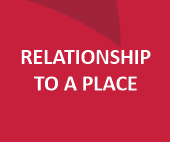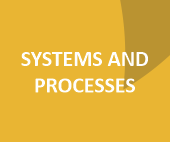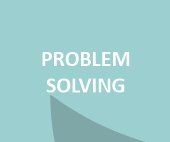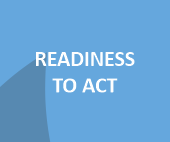DEFINITION OF THE COMPETENCE
The PROBLEM SOLVING area develops pupils‘ ability to understand social and environmental problems of local or global scale and how to contribute to solving them. Within the continuum, this area can be considered an effective strategy which allows pupils to achieve conduct responsible towards nature and people. This strategy is supported by stances and skills connected to pupils‘ readiness to act in favour of the environment and society and by the ability to effectively examine problems and phenomena. The word problem is understood as threat to a value from the sociological or environmental point of view local (e.g. pollution of a local stream, a place that is dangerous for children on their way from school, etc.) and global (climate change or migration) scale. A problem always calls for a discussion and, as the case may be, a solution. Problems, or their causes and consequences, tend to be interlinked. It is necessary to unravel possible consequences of a solution on the acting agents of the problem. Pupils learn to perceive the world and its workings in a complex way, as it is an intricate system.
HOW TO DEVELOP THE COMPETENCE
The ability to solve problems is effectively developer in project learning. It can be realized within various subjects and education areas, ideally in groups. Research of a problem and forming pupils’ own ideas can be connected with model problems. Various role-playing and simulation games offer the opportunity to develop these. The Global Storylines method offers elaborated ways of researching and solving problems in a fictitious world. In order to achieve compact development, including issues from pupils’ lives that can be influenced by them is essential. These methods are closely linked with pupil participation and school democratization. From established programmes, Ecoschool actively partakes. Ecoschool is a programme dedicated to make running schools more eco-friendly. Other programmes that deserve a mention are Active Citizens, School for Sustainable Living and others. What does not contribute much to developing problem-solving skills is naming and briefly explaining global environmental problems (overpopulation, climate change, etc.) by the teacher.
|
THE STUDENT EXPLORES A PROBLEM |
||
|
|
Initial level |
Advanced level |
|
IDENTIFY A PROBLEM |
He/She familiarizes themself with a specific local environmental or social problem. He/She explores it and collects the basic information about it. |
He/She recognizes both local and global environmental or social problems. He/She finds information about a problem from a variety of sources, compares them and critically judges them. |
|
EXPLORE THE |
He/She examines some underlying context of a problem, its causes and potential impacts. |
He/She examines the context of the problem from different perspectives, e.g. economic, environmental, social, historical, ethical or political. The student investigates possible causes of a problem. He/She estimates what impacts the problem has or could have on people and the environment. |
|
MAP INVOLVED |
He/She reflects on different views of involved people and compares them. |
He/She reflects that different people have different views on a problem based on who they are, what they believe in and what they want to achieve. He/She assesses whether different views on a problem and its solutions create a conflict. |
| SURVEY OF INVOLVED PEOPLE | He/She finds information about the problem from the people with direct concern in the problem. |
He/She conducts their own survey (e.g. by a questionnaire or interview with key people involved in a problem). Then he/she summarizes the results. |
|
THE STUDENT WORKS ON ITS OWN OPINION ON A PROBLEM |
||
|
|
Initial level |
Advanced level |
|
FORMING OWN |
He/She expresses their own opinion on a problem. |
He/She expresses and justifies their own opinion on a problem using the information the student found about the problem. |
|
THE STUDENT WORKS ON ITS OWN OPINION ON A PROBLEM |
||
|
|
Initial level |
Advanced level |
|
SOLUTION |
The student analyses a problem and proposes a solution |
He/She explains how the proposed solution is beneficial for |
|
THE STUDENT SEEKS A PROBLEM SOLUTION |
||
|
|
Initial level |
Advanced level |
|
DECISION AND |
Out of multiple choices, the student chooses a problem he/ |
He/She maps problems in their neighbourhood. He/She chooses a problem that interests and impacts them and justifies the choice.He/She creates a plan, sets objectives, prepares stepby-step guide, ways to evaluate success, and if necessary assigns roles and tasks to the team. |
|
IMPLEMENTATION |
He/She implements the prepared procedure and adapts it if necessary. |
He/She solves the problem according to the prepared plan. The student adapts the plan if necessary. He/She informs the neighbourhood about their activities. |
|
EVALUATION |
In a simple way, he/she summarizes the implementation |
He/She summarises the results of the work and discusses its effects on the problem solutions, the environment and people. He/She evaluates the work and suggests improvements based on his/her experience as well as based on opinions of the others. |
Lipka – školské zařízení pro environmentální vzdělávání Brno, příspěvková organizace, pracoviště Kamenná 20, Brno, telefon: 543 420 823, email: kamenna@lipka.cz, www.lipka.cz










